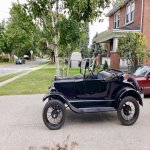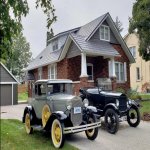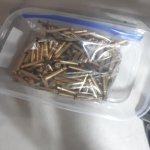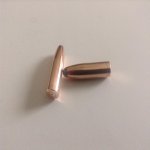When I was a kid, I suppose that the Lee-Enfield rifle was the most common centerfire gun owned by my neighbors and friends. In those days, you could pick-up 303 factory ammo at any hardware store, or Canadian Tire, at a reasonable cost. I’m sure that there are just as many Lee Enfields now as then, but times have changed.
Now many/ most of these guns are owned by older people – who have had such guns for years. With this change, demand for factory ammo has plummeted – as the guns are being used less for hunting and recreational shooting. The old guys who own the majority of Lee-Enfields are generally cheap and not very discerning – and tend to have lots of free time on their hands. As such, they keep their guns shooting using cast bullets – and eventually that becomes its own hobby.
Is that a good thing? In a net sense, probably not. Chances are that the shift away from the Lee-Enfield away from being everyone’s gun to a platform for bullet casting hobbyists has seriously reduced demand for factory ammo and even .311 jacketed bullets.
I personally bought my first Lee Enfield when I was a 30-year-old young professional. Specifically, I bought a No.5 and a box or two of factory ammo - probably from my neighborhood Canadian Tire. Then, after an enjoyable time shooting the gun, I was left with a bunch of brass – and that became a starting point for me getting into reloading for the gun. The pathway for getting into that was straight forward because you could buy projectiles and other reloading components anywhere, at a fair price – to keep your gun shooting.
Now, every once in awhile, I overhear a conversation – at a gun show, etc. – between some old codger and a potential new young new buyer of a new Lee-Enfield. As soon as the old codger gets into his tales of how he casts his own bullets and uses o-rings around his old, fragile brass – to avoid head separation, etc. the potential young buyer gets what a hassle owning such a gun is – and moves on. Obviously, as this trend continues, there's going to be even less demand for factory ammo and .311 reloading bullets components for the L-E. That becomes a vicious circle.
I regret that the numerous L-Es out there are going to be increasingly owned by a declining number of old bullet casting enthusiasts – people who aren’t going to be around forever. Maybe Lee-Enfield ownership will end-up like the deal with pipe smokers.
Now many/ most of these guns are owned by older people – who have had such guns for years. With this change, demand for factory ammo has plummeted – as the guns are being used less for hunting and recreational shooting. The old guys who own the majority of Lee-Enfields are generally cheap and not very discerning – and tend to have lots of free time on their hands. As such, they keep their guns shooting using cast bullets – and eventually that becomes its own hobby.
Is that a good thing? In a net sense, probably not. Chances are that the shift away from the Lee-Enfield away from being everyone’s gun to a platform for bullet casting hobbyists has seriously reduced demand for factory ammo and even .311 jacketed bullets.
I personally bought my first Lee Enfield when I was a 30-year-old young professional. Specifically, I bought a No.5 and a box or two of factory ammo - probably from my neighborhood Canadian Tire. Then, after an enjoyable time shooting the gun, I was left with a bunch of brass – and that became a starting point for me getting into reloading for the gun. The pathway for getting into that was straight forward because you could buy projectiles and other reloading components anywhere, at a fair price – to keep your gun shooting.
Now, every once in awhile, I overhear a conversation – at a gun show, etc. – between some old codger and a potential new young new buyer of a new Lee-Enfield. As soon as the old codger gets into his tales of how he casts his own bullets and uses o-rings around his old, fragile brass – to avoid head separation, etc. the potential young buyer gets what a hassle owning such a gun is – and moves on. Obviously, as this trend continues, there's going to be even less demand for factory ammo and .311 reloading bullets components for the L-E. That becomes a vicious circle.
I regret that the numerous L-Es out there are going to be increasingly owned by a declining number of old bullet casting enthusiasts – people who aren’t going to be around forever. Maybe Lee-Enfield ownership will end-up like the deal with pipe smokers.














































































